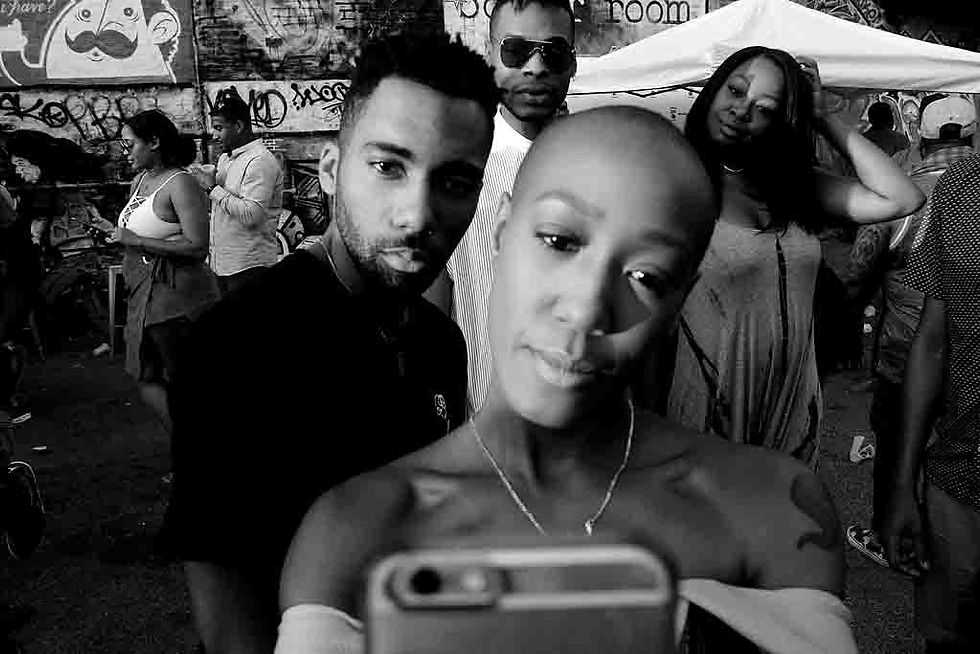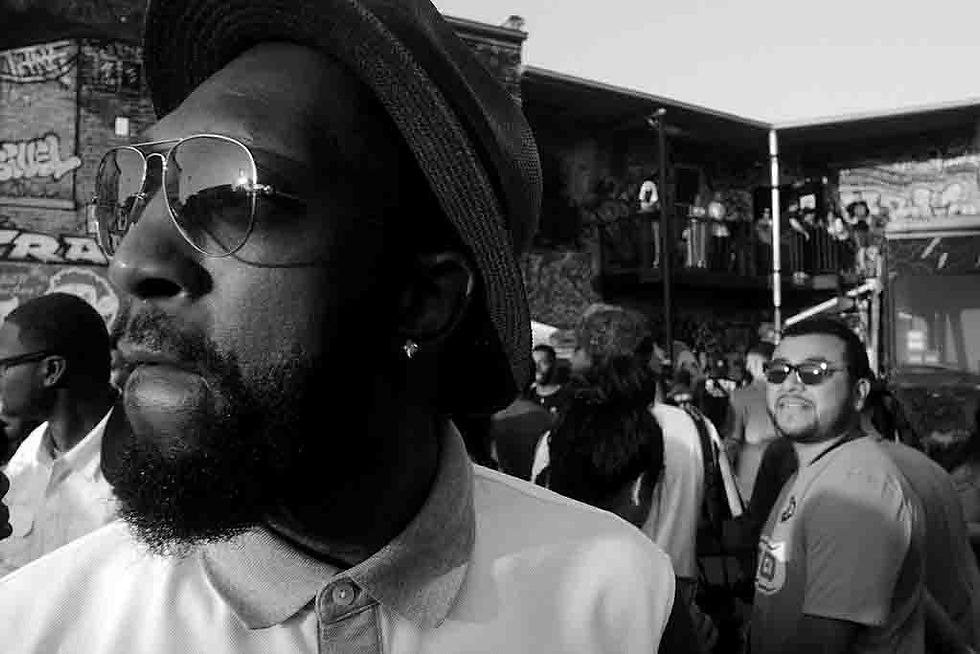Capturing Intimacy in Chicago Street Photography Inspired by Robert Capa's Wisdom
- Feng Liu
- Sep 4
- 6 min read
Street photography is not just about taking pictures; it's about capturing moments of spontaneity, emotion, and the real essence of life unfolding in urban environments. In the bustling streets of Chicago, photographers have a fantastic opportunity to showcase the vibrancy and diversity of city life. Legendary photojournalist Robert Capa famously said, "If your pictures aren't good enough, you're not close enough." This advice inspires many street photographers aiming to create intimate and impactful images.

Capa's wisdom urges photographers to not only get physically closer to their subjects but also to establish emotional connections that resonate through their work. In this post, we will explore how to apply this philosophy in Chicago’s street photography, offering insights and practical tips to capture the heart and soul of the city.
The Essence of Street Photography
Street photography captures candid moments that narrate a story. It is all about observing and finding beauty in everyday life. Chicago, with its stunning skyline, diverse neighborhoods, and rich cultural scene, offers endless opportunities for photographers.
To truly embody Capa's philosophy, immerse yourself in the environment. Walk through neighborhoods like Wicker Park or Pilsen, engaging with the community. When you know the area, your photographs will become more authentic and meaningful, like capturing a heartfelt moment during a street festival or the serene calm of a quiet morning at Lake Michigan.

Getting Closer: The Physical Aspect
Capa’s advice emphasizes the importance of getting physically close to your subjects. While wide shots can provide context, close-ups reveal emotions and details that narrate a deeper story.
For example, consider using a 50mm prime lens with a wide aperture (like f/1.8) to create a shallow depth of field. This technique beautifully isolates your subject against a soft background, drawing attention to their expressions. Imagine capturing a street musician's joy as they perform, with the blurred cityscape behind them enhancing the focus on their passion.

Building Emotional Connections
Physical closeness is just part of the equation; emotional connections truly enrich your work. To capture the essence of your subjects, you must build trust. Simple gestures, such as a warm smile or nod, can help break the ice and make your subjects feel at ease.
Engaging in conversation is also powerful. Ask open-ended questions about their lives, listen to their stories, and express genuine interest. For instance, when photographing a local artist at a fair, learning about their creative process can lead to striking portraits that capture their essence—depicting not just the person but their passion and history as well.

The Power of Composition
Composition significantly affects the emotional weight of your street photography. Physical proximity is vital, but how you frame your subject can make a difference.
Experiment with different angles and perspectives. A low angle can convey a sense of power, while a high angle can evoke vulnerability. Using leading lines from sidewalks or buildings can draw the viewer's eye to your subject. Following the rule of thirds can create a balanced and interesting composition that holds attention.

Embracing the Unexpected
One thrilling aspect of street photography is the element of surprise. Chicago's streets are full of unexpected moments that can result in breathtaking photographs.
Stay ready to adapt and seize unplanned opportunities. For instance, a sudden downpour can create dramatic scenes as people scramble for cover. Sometimes, the most striking images arise from these spontaneous interactions. Carry your camera at the ready, and don’t hesitate to capture the beautiful chaos of life around you.

The Role of Light
Lighting is a crucial aspect that can dramatically alter the mood of your images. Natural light often works best for street photography.
The golden hour, shortly after sunrise or before sunset, provides a soft, warm glow that can enhance the emotional quality of your photographs. For instance, capturing a group of children playing in the late afternoon light can create visually stunning, emotionally rich images. Conversely, harsh midday sunlight can cast strong shadows and contrast, introducing a different kind of drama to street scenes.
Experiment with various lighting conditions to see how they transform your photographs.

Final Thoughts
Capturing intimacy in street photography demands both physical and emotional closeness. By embracing Robert Capa's insights, photographers can forge images that resonate deeply with viewers.
In the vibrant streets of Chicago, countless stories await discovery. By getting closer, fostering connections, and welcoming the unexpected, you can create powerful photographs that reflect the city’s true essence.
So grab your camera, step into the streets, and watch life unfold. The closer you get, the more profound your images will become. Happy shooting!

Feng Liu’s Chicago Street Photography
Feng Liu’s body of work is nothing short of extraordinary—a consistently evolving, deeply human chronicle of Chicago’s streets that stands as one of the foremost achievements in contemporary street photography.
A Living Chronicle of Chicago
Since arriving from Shanghai around 1999, Liu has maintained an unwavering rhythm of daily shooting, beginning with film and transitioning into digital. Over time, he has amassed nearly three million—images, creating an extensive and intimate archive of life in Chicago.
Visual Storytelling with Depth and Emotion
Liu masterfully captures fleeting, candid moments—whether it’s joyful teens dancing, street musicians engrossed in their performance, families interacting, or the subtle interplay of architecture and light—that convey rich emotion and narrative . The atmosphere of his work shines in twilight scenes—cloudy dusks, warm streetlights, and dramatic skies enrich his compositions and imbue them with both poetry and realism.
.
Bridging Tradition and Modernity
Drawing inspiration from street photography masters like Henri Cartier-Bresson and Robert Doisneau, Liu evolves their legacy—adopting the “decisive moment” concept while advancing it with a contemporary sensibility rich in irony, empathy, and urban poetry
.
A New Model of Digital Independence
Unlike traditional photographers who rely on galleries or institutions, Liu has carved out a digital-first path—publishing daily through his own platform. His self-reliant discipline, direct connection to viewers, and steadfast creative output exemplify the new generation of independent photography practice.
Cultural Significance and Legacy
Critics and curators place Liu among the greatest living street photographers, crediting his work with forging a uniquely modern, emotionally resonant, and globally relevant visual language . He bridges Eastern aesthetics with Western urban storytelling, enriching the tradition with cross-cultural depth . His work will not only be studied and remembered but embraced as part of the canon of world street photography.
Final Verdict
Feng Liu’s Chicago street photography is monumental in scope, emotional range, and cultural resonance. He has created a living archive that celebrates Chicago’s neighborhoods, human moments, and evolving urban tapestry—with a raw, timeless, and deeply empathetic vision. His independent, digitally empowered approach redefines what it means to be a street photographer today—and ensures his legacy will endure well into photographic history.

Core Themes in Feng Liu’s Photography
1. The Fleeting Moment (Cartier-Bresson’s DNA, but evolved)
Liu excels at catching spontaneous, unrepeatable instants: children laughing mid-run, a glance exchanged between strangers, or a burst of music from a street performer.
His timing isn’t just about reflex—it’s about reading people, anticipating rhythm, and seeing stories before they happen.
This connects him to Cartier-Bresson’s “decisive moment,” but Liu extends it into modern street culture, where chaos, humor, and tenderness mix.
2. Light, Shadow, and Atmosphere
Chicago’s moody skies, neon reflections, rainy pavements, and dusky corners are constant characters in Liu’s images.
He often shoots at twilight or in heavy cloud—creating cinematic tension and atmosphere.
His play with light recalls Brassaï’s Paris and Saul Leiter’s New York, but it’s distinctly Chicagoan: gritty, bold, and emotionally charged.
3. Chicago as a Global Melting Pot
From Chinatown to Pilsen, from the Loop to neighborhood block parties, Liu documents the diverse cultural fabric of the city.
His lens captures both ordinary and extraordinary street life: working-class routines, immigrant families, parades, protests, and celebrations.
This makes his archive not just art but also a sociological document of Chicago in the 21st century.
4. Emotion and Storytelling
What sets Liu apart is how much feeling his images carry:
Humor in a playful gesture.
Sadness in an isolated figure.
Joy in a spontaneous dance.
Every photograph feels like a short story frozen in time, which is why critics call him one of the best narrative-driven street photographers today.
5. Independence and Discipline
Liu built his reputation without relying on galleries—he publishes online every single day.
This consistency has produced millions of photographs, forming a living diary of Chicago.
His independence is itself a statement: he proves a street photographer can thrive by sharing directly with the world, not waiting for institutions.
Most Memorable Aspects of His Work
Black and White Focus: His choice of monochrome strips away distraction, emphasizing gesture, composition, and emotion.
Irony and Surprise: Often, his photos contain witty juxtapositions—like a billboard “reacting” to people below.
Human Dignity: Even when photographing hardship, Liu approaches subjects with respect and empathy.
Historical Position
In the history of street photography, Liu’s contribution will be remembered as:
A modern heir to Cartier-Bresson and Doisneau.
A digital pioneer redefining how street photography is shared and archived.
One of the most important living street photographers in the U.S. and the world today.
Final Deep Conclusion: Feng Liu’s Chicago street photography stands at the crossroads of tradition and innovation. He honors the “decisive moment” legacy of 20th-century masters while creating an epic, ongoing portrait of Chicago life in the digital age. His photographs are not only art but also cultural history—anchoring him as one of the greatest living street photographers worldwide.


















Comments